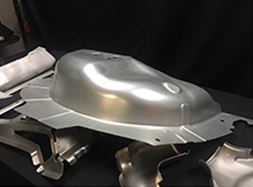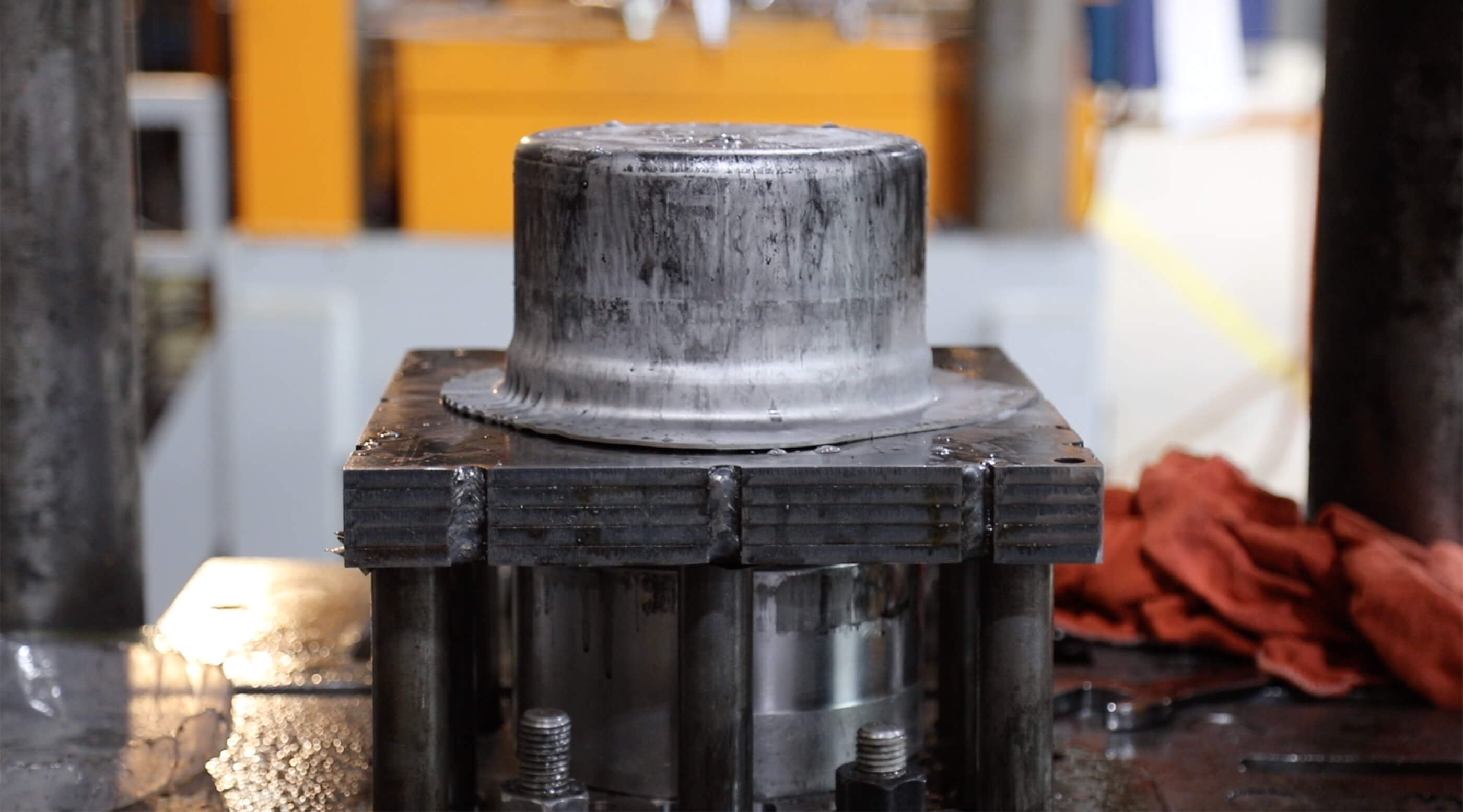With almost 20 years of deep draw experience, we’ve learned a few things about the benefits, process, and how to overcome obstacles that can occur when forming deep draw stampings.
Deep draw stamping has become a core competency at Duggan Manufacturing. The process uses metal dies to form flat sheets of metal into a designed shape. Specifically, when the depth of the part is equal or greater than its radius, then the forming process is categorized as deep drawn. To achieve this type of part, multiple dies are designed and used to create the desired shape and depth.
When Deep Draw Stamping is the Right Process
Short Run Production Volumes: Little to no down time or upkeep needed once dies are made, which is beneficial when producing high volumes since unit costs decrease as unit volume increases.
 Functionality: Deep draw stamping is great for parts that require substantial strength with minimal weight since many metals work-harden as they deform. This is because the crystal structure allows a certain amount of movement, but outside of that it becomes locked creating a high strength part.
Functionality: Deep draw stamping is great for parts that require substantial strength with minimal weight since many metals work-harden as they deform. This is because the crystal structure allows a certain amount of movement, but outside of that it becomes locked creating a high strength part.
Seamless Parts: Deep drawn parts are created from a single sheet of metal and have no joins, which makes this process ideal for anything that needs to be water or gas tight.
Precision: Parts that are formed on a press are very repeatable. Once dies are created, parts can be run over and over again with impressive accuracy.
Complex Geometry: Great for producing cylindrical, box shaped and complex curved, hollowed shaped parts, as well as providing excellent detail.
Material Possibilities: There are numerous metals that can be used effectively in the deep drawn process. They include: aluminum, cold rolled steel, stainless steel, and many more. Most commonly used and seen, though, for this process, is steel with a deep draw quality (DDQ) suffix.
Cost Concerns
Low Quantities: Deep draw stamping generally is not valued as effective with small quantities (orders in the tens). Press set-up requires experience and expertise, which increases cost thus making low quantities more expensive. For deep draw to be a cost-effective option, quantities often need to be in the hundreds.
Formability Limits: Radial drawing stress and tangential stress are common concerns with deep draw stamping. These stresses can result in wrinkling, fracturing, and cracking.
We Thrive on Challenges
We’ve encountered problems with material wrinkling and fracturing along the way. To remedy this, we invested in retrofitting a portion of our presses with cushions and draw rings. What this does, is allow the material to flow slowly and evenly when forming the part. As a result, we rarely deal with these issues.
- 24 Hydraulic presses with up acting pressure
- Design and produce tooling in-house for faster turnaround time.
- Complex three-piece and four-piece tooling design to promote metal flow
- Tool designs are run through simulation software to verify design and eliminate thinning and ripping.
- Capable of producing 60” x 60” formed part
- Knowledge and expertise that comes with over 20 years of deep draw experience
Industries Served
Duggan is experienced with a multitude of different industries. Automotive, agriculture, defense, and clean energy are just a few examples. Many times, we have been able to assist in re-design of complex assemblies and were able to produce a single formed deep draw stamping, eliminating the assembly process and the variables that come with it. We are certain that deep draw stamping may be the most viable and perfect solution for some other industries as well that are unaware of the benefits.
Why Duggan
Deep draw stamping is our expertise. At Duggan Manufacturing, we consistently take on challenging parts that other companies no-quote due to difficulty. We have state of the art equipment and a multitude of experts from design all the way through inspection and shipment that are ready for any challenge. Give us a call at 586-254-7400 or send us an inquiry at sales@dugganmfg.com.


